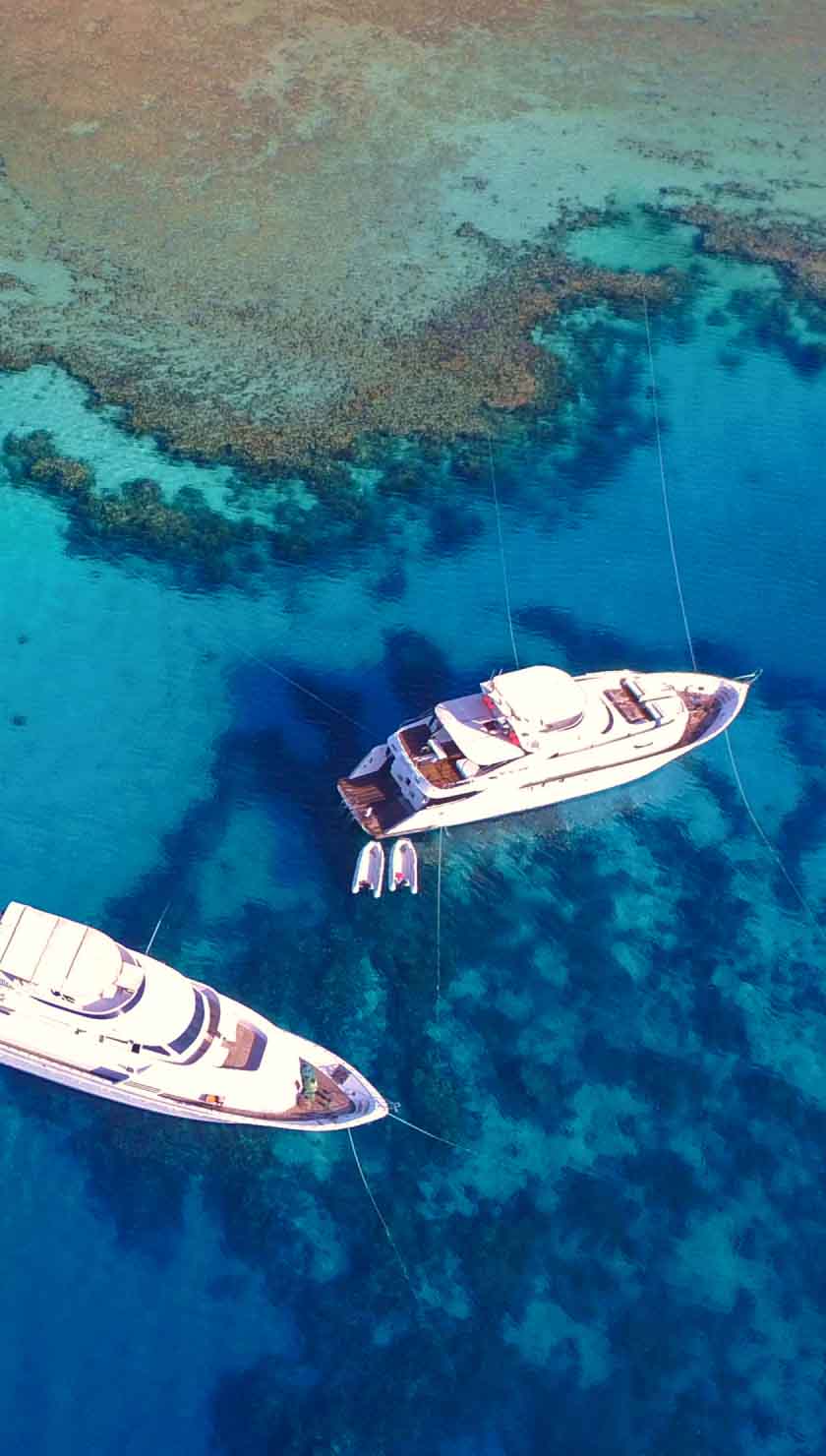Best places to dive in July
July is one of the best months of the year to book your next liveaboard adventure. More nutrients and colder water in the Cocos Islands and the Galapagos result in mind-blowing diving with ocean giants. Whale season is in full swing on the Great Barrier Reef, and conditions are perfect in Sipadan.
Hundreds of hammerheads around Cocos Island

June through to December is the rainy season in Cocos Islands. While this may mean choppier seas and more challenging dive conditions, it also means unforgettable diving with many marine megafauna. Cocos Island in Costa Rica is a diving mecca, and due to its remote location, it can only be reached by liveaboard. The area is renowned for incredible diving with schools of sharks, mantas, dolphins, and rays. The fish life in Cocos is equally impressive, and the island is home to 27 species of fish that can only be found in the waters surrounding Cocos Island.
Ocean currents sweep nutrients through Cocos Islands' waters during July, attracting hundreds of hammerheads, mantas, and whale sharks. The visibility often drops to 10 – 25 meters during this time, not because of the rain but due to the thick layer of plankton in the water. Filter feeders such as manta rays and whale sharks are even more plentiful during this time, feasting on the vast amount of plankton in the waters of Cocos Islands. July is the early rainy season, so the water is still relatively calm, and thus, the crossing from Costa Rica is often comfortable.
Our top tip for diving Cocos Island: always be prepared! While the water only drops a degree or two between seasons, thermoclines in the water mean that temperatures can drop a huge 6 degrees. This is not the most pleasant underwater sensation, so ensure you’re suited, booted, and have a hood on before diving.
Cold currents equal magical diving in the Galapagos

The water might be colder during July in the Galapagos Islands; however, the wildlife that is even more abundant during this time compensates for the chillier temperatures.
July is the ‘dry’ season in the Galapagos. There is less rain, but the temperature above and below the ocean's surface is cooler than during the ‘wet’ season. During July, the Humboldt Current carries cold water to the Galapagos Islands, rich in nutrients and plankton. Where there is plankton, there are filter feeders, and in the Galapagos, you will have more whale shark and manta encounters than you can possibly imagine. July is one of the most popular months to visit this spectacular destination, and is thought of as ‘whale shark season.’ The likelihood of seeing these enormous fish is greatly increased during this time.
Book the ultimate whale experience in the Great Barrier Reef

Dwarf minke whales begin arriving in Australia’s Great Barrier Reef in early June, but if you want the ultimate experience with these adorable whales, July is the month to head to the land down under.
The liveaboard ‘Spoilsport’ offers divers and snorkelers far more than just a dive trip on their Ultimate Minke Whale Expedition. This trip usually departs towards the end of July, and passengers on board can participate in real research by monitoring these whales' behavior while in the water with them. The longest encounter onboard one of these trips was a whopping ten hours! Biology and ecology experts are on board to answer all your whale-related questions, and entertaining lectures occur after dinner most nights.










